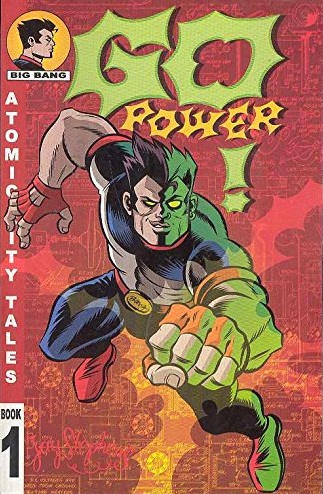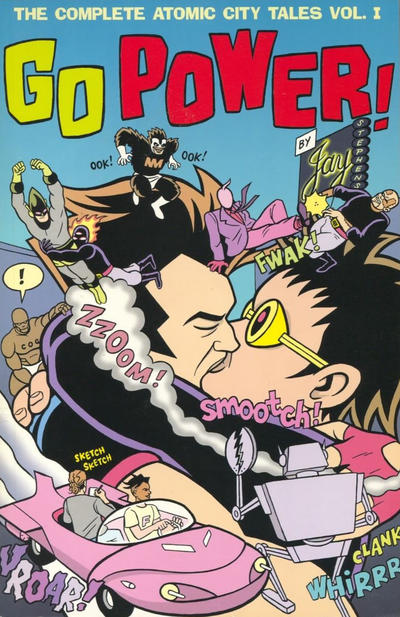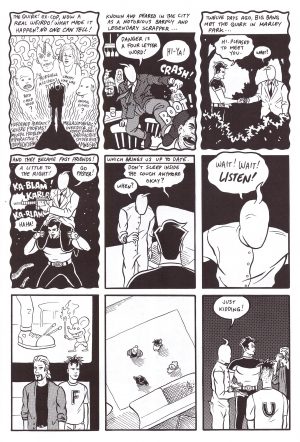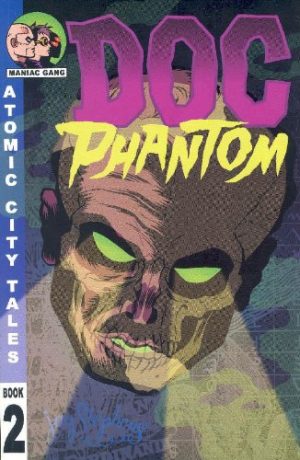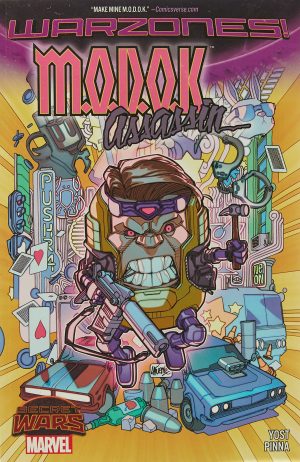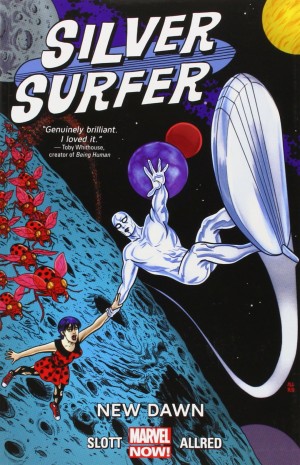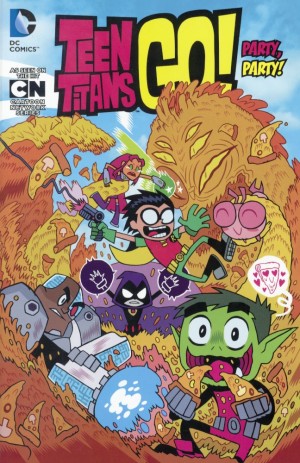Review by Ian Keogh
Jay Stephens is a talent sadly lost to comics, with a successful career in animation resulting from a relatively prolific cartooning schedule throughout the 1990s, from which Atomic City Tales was his take on superheroes. It’s both a deconstruction and a love letter to the wilder material of the 1960s, with a constantly sparking imagination swerving the plot off into new territory.
Take Big Bang. He was an ordinary guy transformed when he beat on a cosmic drum, and can now do anything, literally anything. We may all be fantasies that he’s constructed, living our routine lives just to amuse him. He has a try at crime fighting, but that goes wrong, so he just, you know, hangs out, in his super cool clubhouse. Except when a woman grabs his attention. But he’s not the mightiest creature in Atomic City, Doc Phantom is, the ghost in the machine. Or maybe it’s the Quirk, who makes babies from ice cream. Their extraordinary goings on are spliced with the ordinary day to day life of Jay Stephens, cartoonist, whom Big Bang has recording his adventures.
Everything in Atomic City Tales has child like wonder about it, drawing from the same well as Madman, but with an even looser structure. It has the sense that anything can happen, restricted only by Stephens’ imagination, so if the criminal gang command him through his ouija board to produce a story about them, that’s what we get. Yet it’s not about villainy, or much anyway, it’s about Skinman wanting to head out shopping at the mall and the difficulties that entails.
Stephens is a superb intuitive cartoonist whose work develops over the two years these stories were originally created (1993 and 1994). His ink line has a lushness to it, and for different characters he experiments with weighing the balance of black and white on the pages, being unafraid to saturate with either.
Don’t expect much in the way of cohesion and resolution. We’re dropping in and out of the characters’ lives and snippets is what we get. If you become fixated on the never resolved part the Bruise plays in everything you’ll not enjoy the remainder, and there’s so much to appreciate. Perhaps you’ll discover what the Bruise has been up to in Book 2: Doc Phantom. (You won’t).
